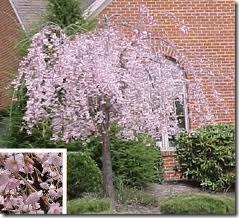The white flowering dogwood (Cornus florida) is best known for its striking white blossoms, which consist of four large showy bracts surrounding lime green centers. Leaves are typically 3 to 6 inches in length and oval in shape. More than 100 varieties of flowering dogwood exist. They may produce pink or red blossoms, in addition to white, in spring. Trees grow on average between 15 and 30 feet in height as well as in breadth. Since the 1700s, dogwoods have been used as ornamental trees to accent landscapes.
Geography
-
According to the U.S. Department of Agriculture’s Natural Resources Conservation Service, the flowering dogwood may be found in 30 states in the continental United States and the District of Columbia. It is considered to be a hardy tree in USDA Zones 5 through 9.
Life Span
-
Flowering dogwoods are usually grown in professional nurseries from grafts to increase the likelihood that the tree will survive root shock and other harsh conditions upon transplant. Trees are started from seeds, allowed to grow to a few feet, and then grafted onto other dogwood varieties to change the original petal color from white to pink or red. Seedlings left ungrafted develop into white flowering dogwood trees. Dogwoods live an average of 80 years when healthy.
Diseases and pests
-
Missouri Botanical Gardens lists the flowering dogwood as vulnerable to a number of diseases and insects. Some of the common diseases that affect the trees are leaf spot, powdery mildew, dogwood anthracnose and crown canker. Insect pests include the dogwood borer and the club gall midge. Other animals, such as deer, beaver and birds, eat parts of the tree. Birds, the least invasive, eat only the red fruit of the tree.
Fun Facts
-
Flowering dogwood grows naturally in Missouri, which has named the pink variety as its official state tree. It grows best in acidic to slightly alkaline, well-drained and loamy soils in part-shade.
North Carolina names flowering dogwood as its state flower and Virginia has designated it as both the state tree and the state flower.
U.S. Presidents George Washington and Thomas Jefferson incorporated flowering dogwood trees into the landscapes of their Virginia homes—Mount Vernon and Monticello, respectively.
Considerations
-
Dogwoods are considered easy to grow from seed on location, but difficult to transplant successfully according, to the Bernheim Arboretum and Research Forest. Transplants grow somewhat slowly the first few years, but then grow steadily until they reach maturity. Dead branches should be trimmed once blossoming and leaf production are finished.


Deprecated: strpos(): Passing null to parameter #1 ($haystack) of type string is deprecated in /home/agriviek8Qv/agriviet.net/public_html/wp-includes/comment-template.php on line 2522